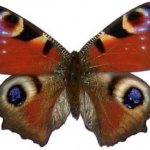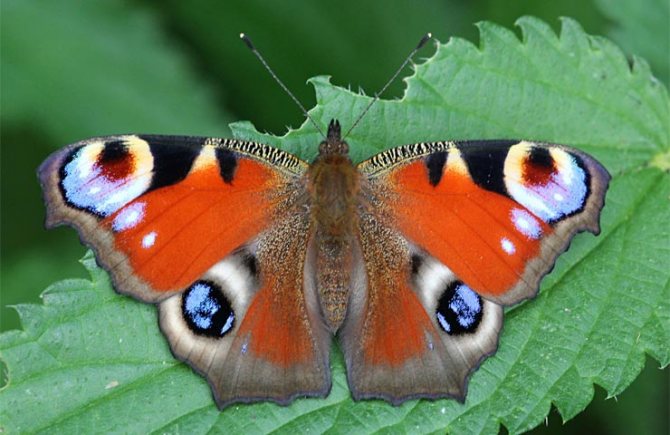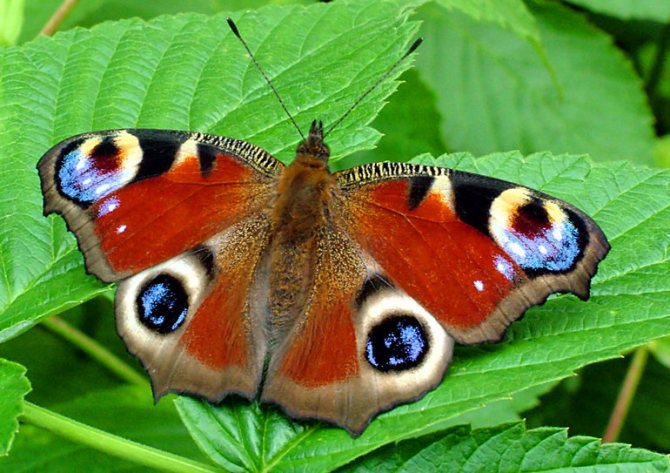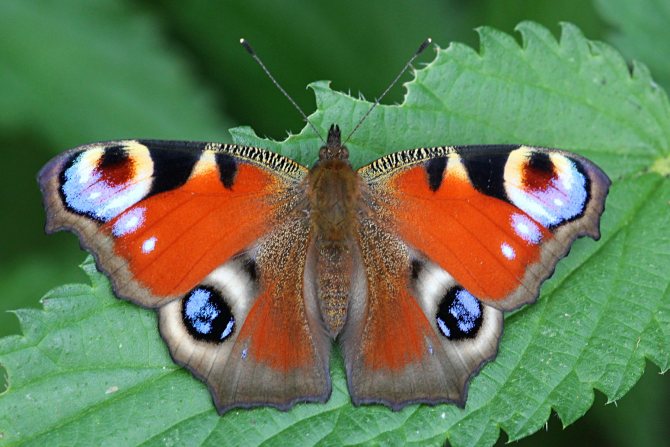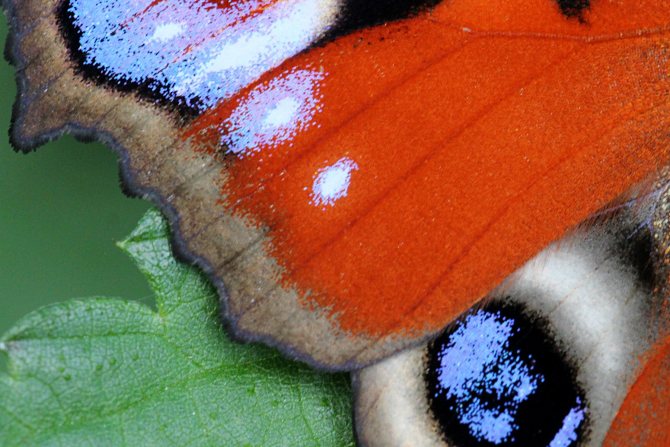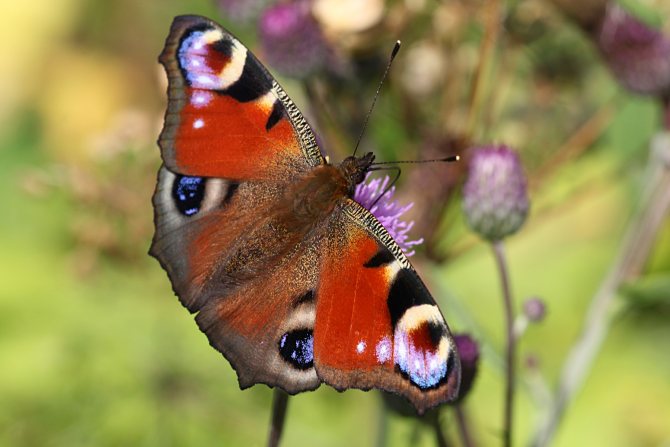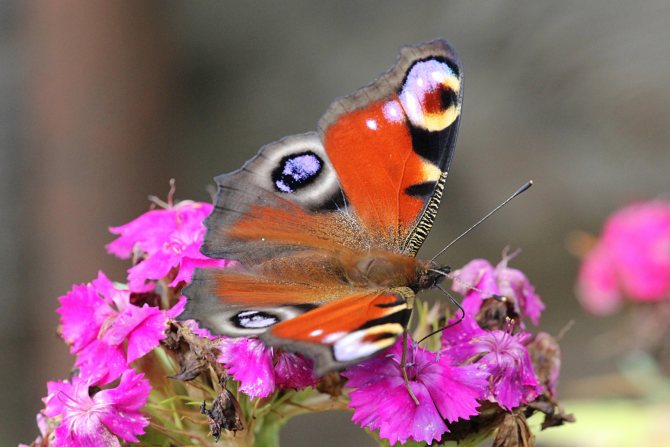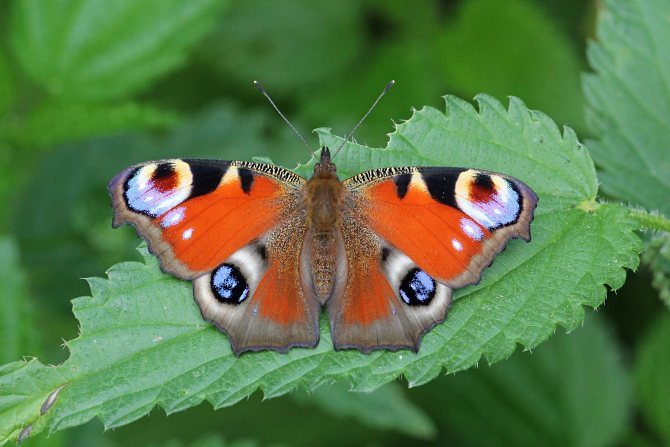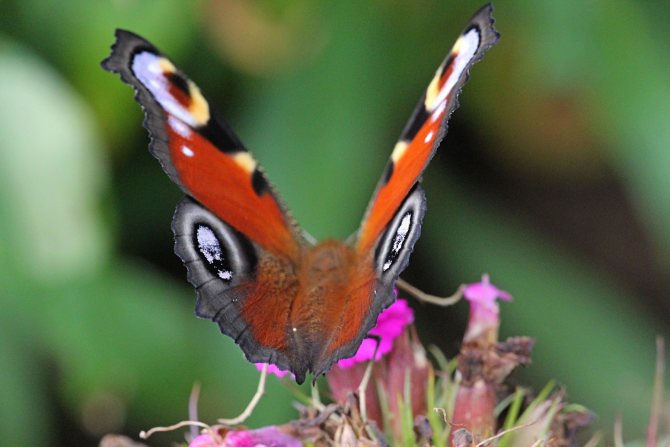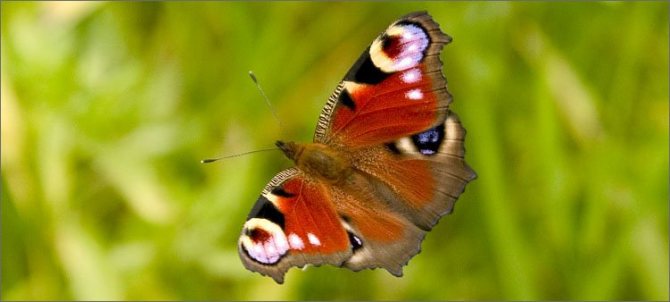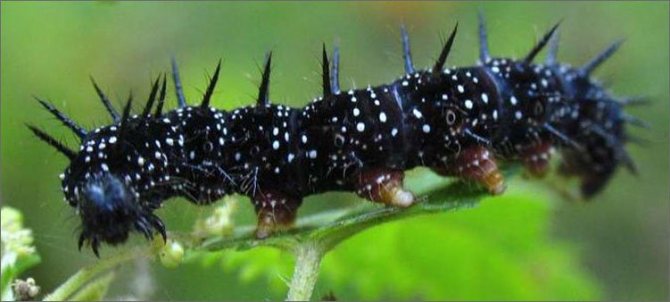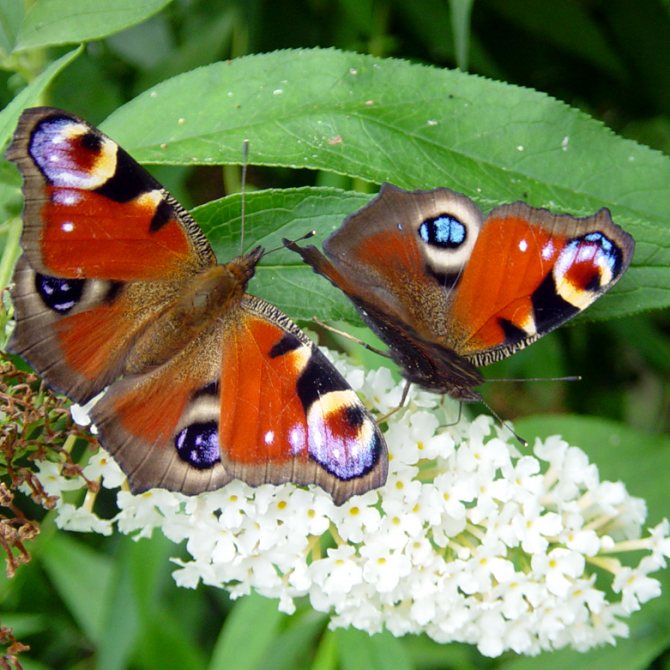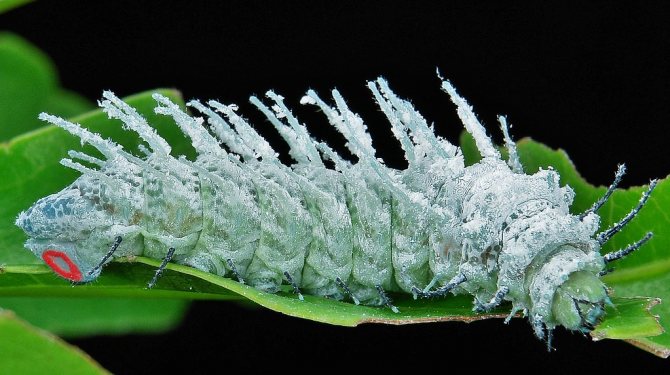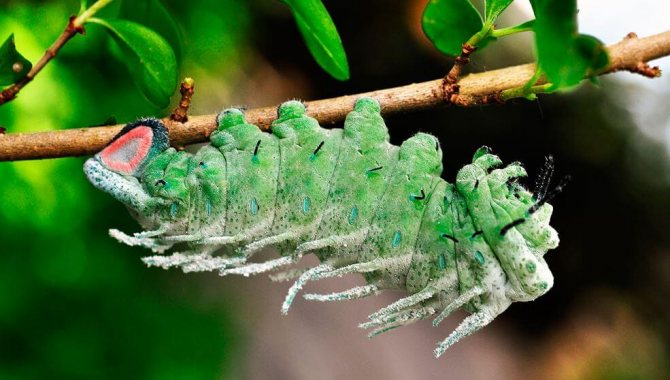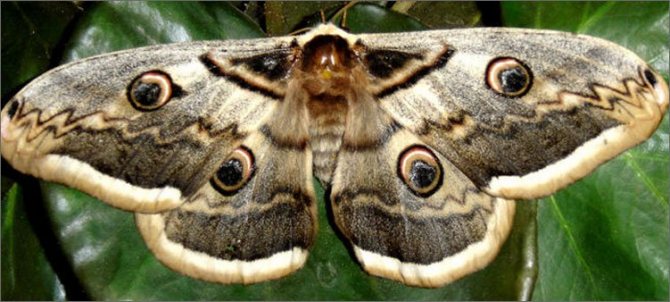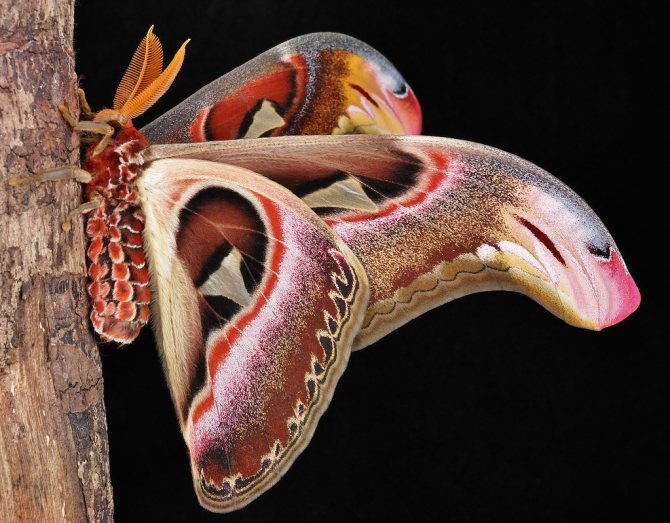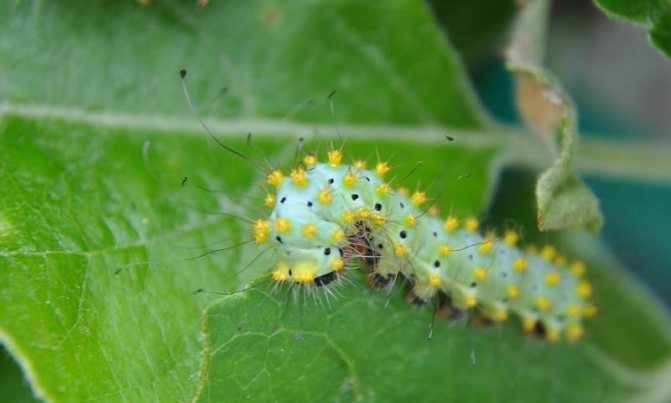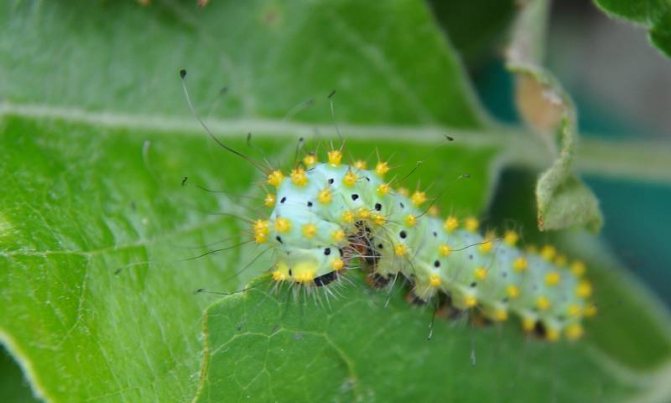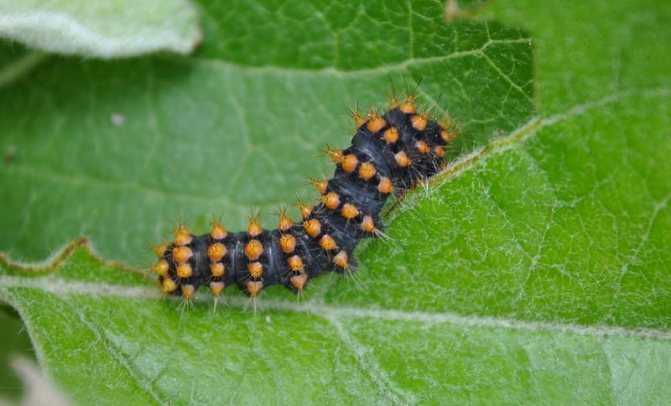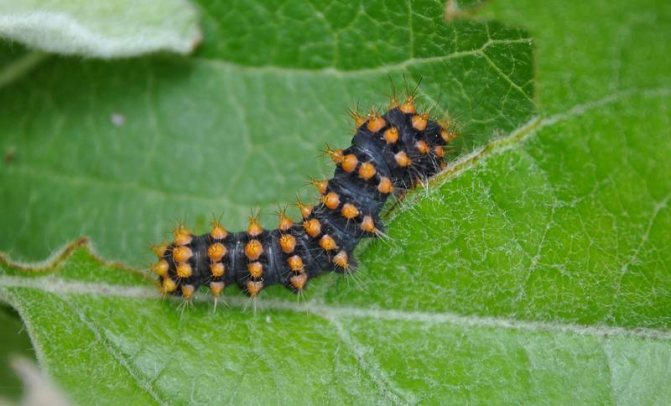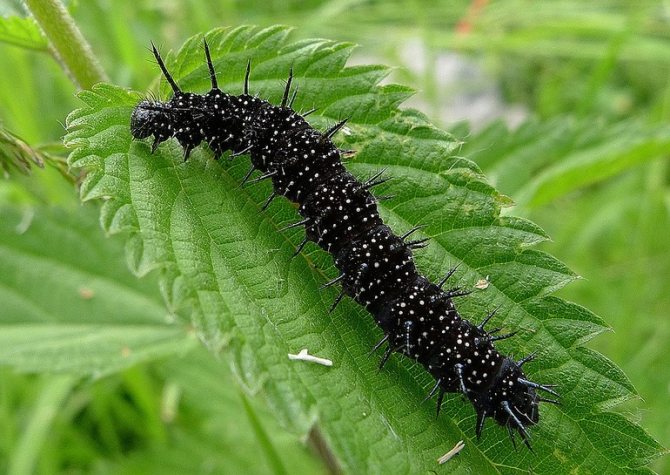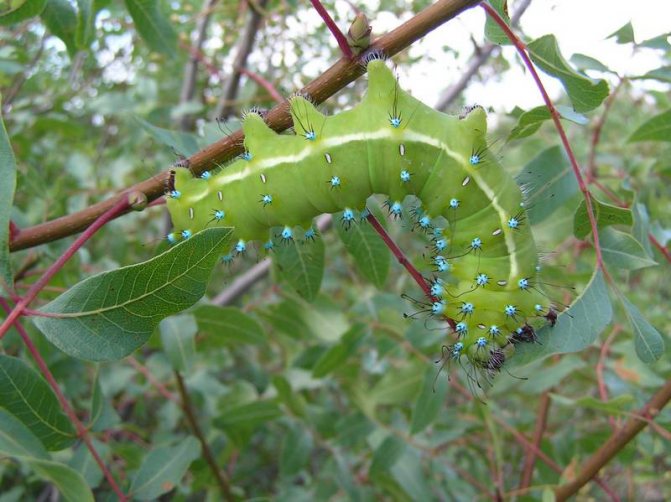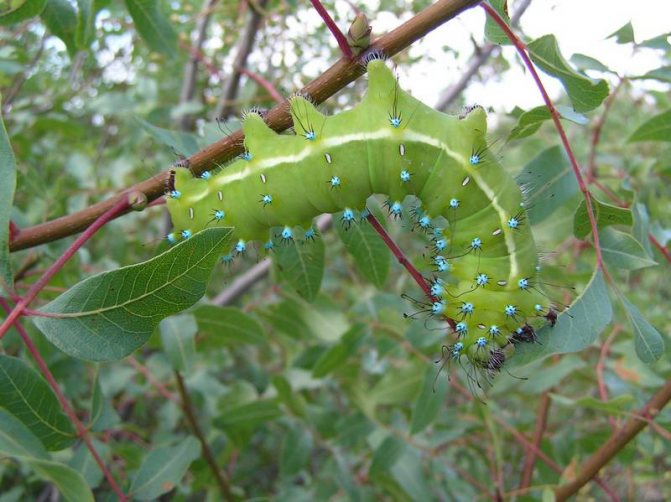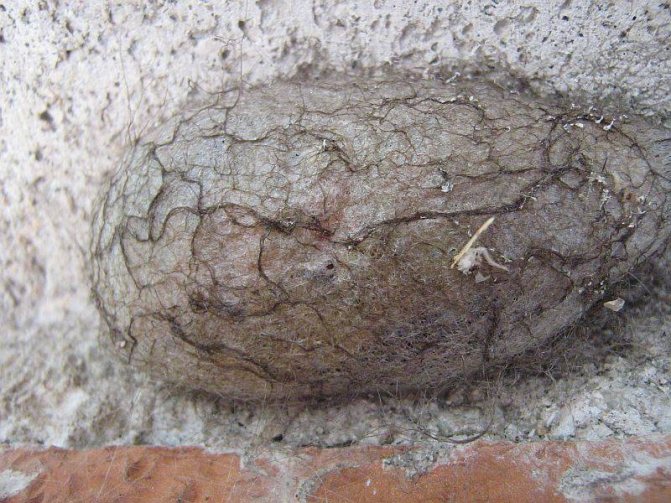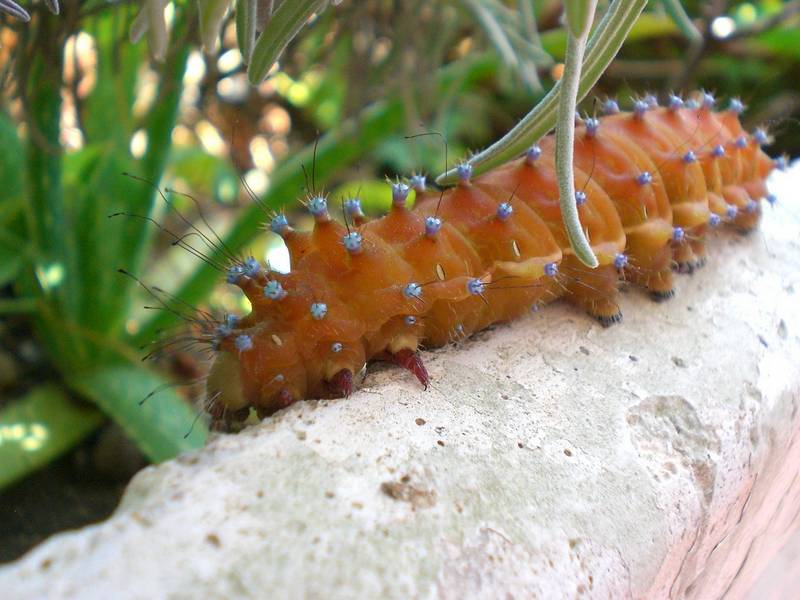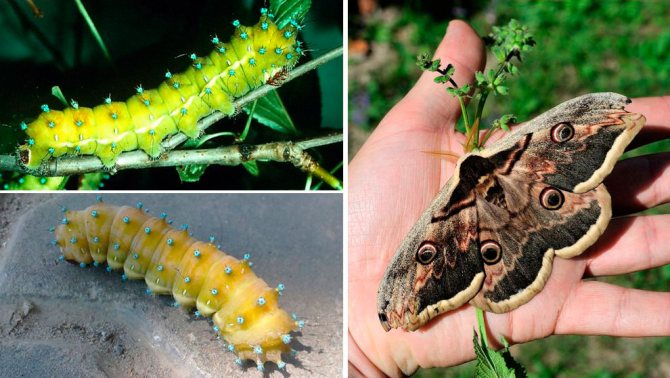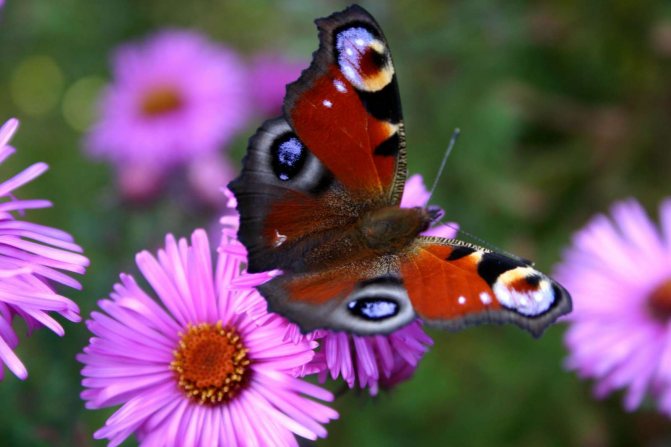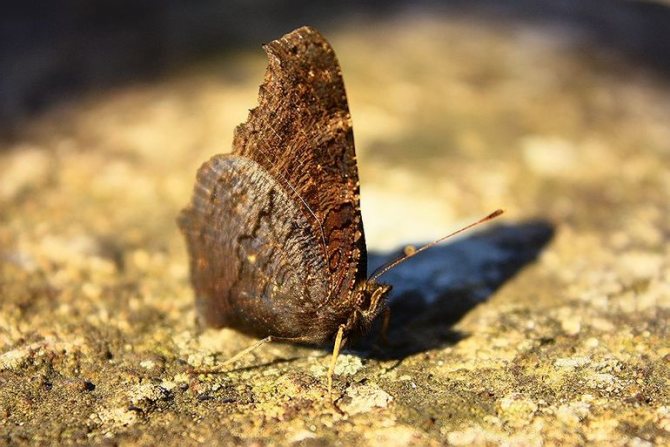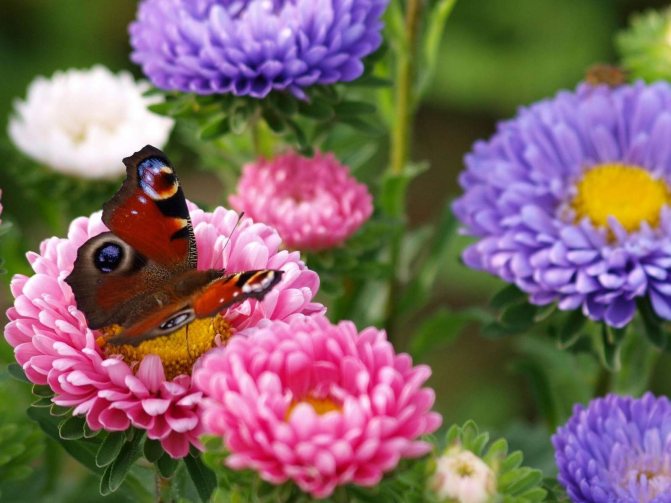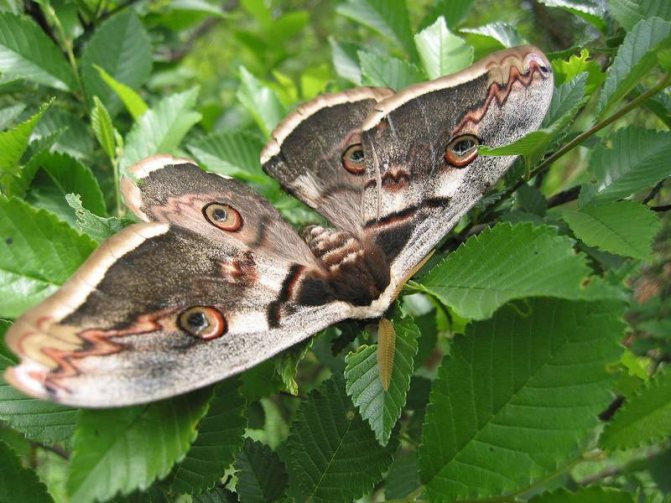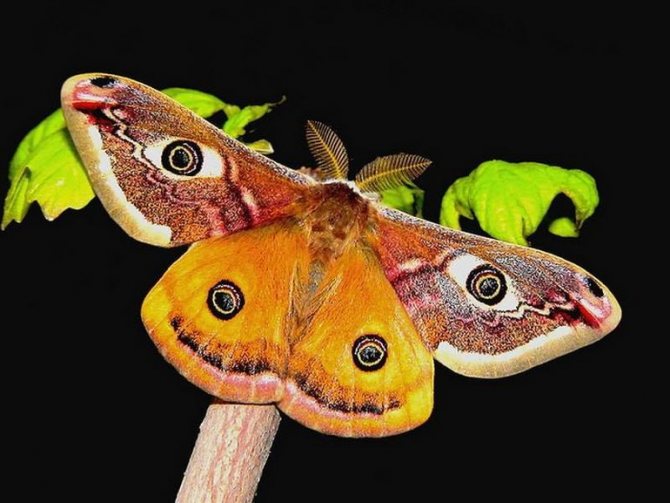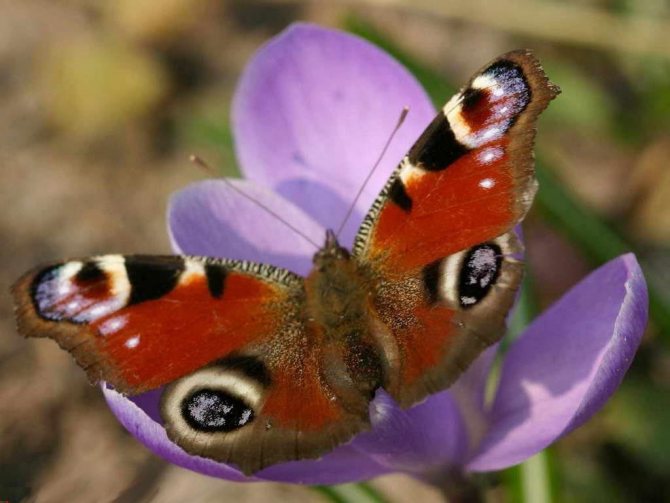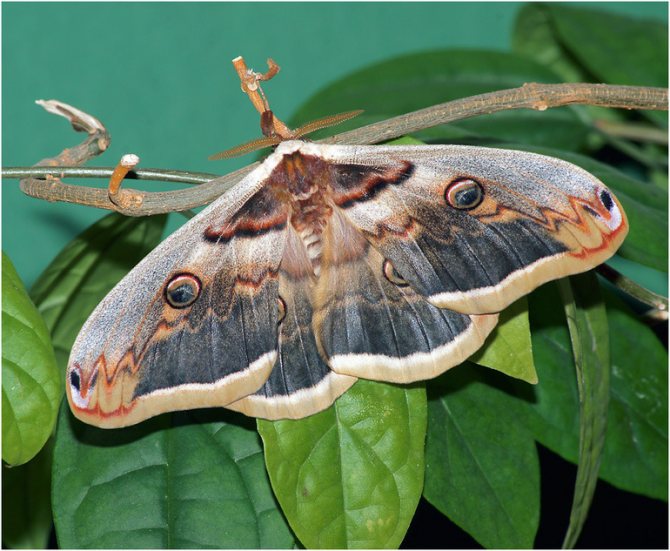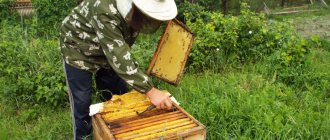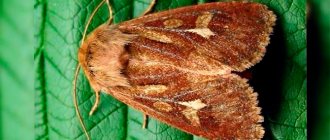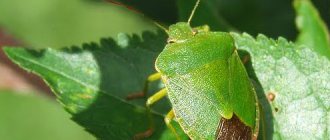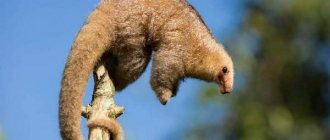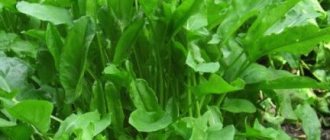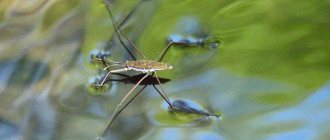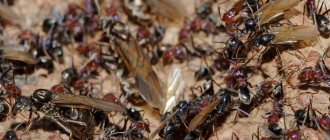- Reports
- Insects
- Peacock Butterfly
One of the brightest and most beautiful representatives of European butterflies is the peacock butterfly.
The butterfly received such a beautiful name due to the characteristic pattern on the wings. On the lower part of the wings, there are rounded patterns that resemble eyes.
The butterfly is not large. The width of the wingspan, depending on the gender of the butterfly, can reach up to 55-62 centimeters. Females have a larger wingspan than males.
The body is covered with small fur and is black in color. The underside of the wings is also black.
Above, the wings are orange-red, with a beautiful and bright drawing in the form of "eyes". The butterfly is hard to miss as it is bright and attractive.
The butterfly lives mainly in open areas and is unlikely to be found in the forest.
The period of activity for a butterfly lasts from early spring to mid-October, when it starts to get colder. If the butterfly lives in the south, then its activity can continue throughout the year.
Basically, peacock butterflies feed on nettles. But their diet also includes burdock, plant nectar, thyme, raspberries and hops. Caterpillars are most often found on nettles and raspberries. Caterpillars are slightly shaggy and black in appearance. They can change their color, and freely acquire green or brown shades, depending on the color of the plant. The color change helps them blend in with the plant and makes them less likely to be attacked by birds.
The pupal period lasts about 2 weeks. The pupa hangs upside down from the leaf and can be brown or green.
Peacock butterflies should be protected, as their number decreases, due to the fact that people destroy the plants they feed on.
Peacock butterfly: photo, description
The size of the butterfly you see in the photo is about 30 mm. The "girls" have a wingspan of 5-6 cm, while "boys" cannot boast a wingspan of more than 4-5.5 cm.
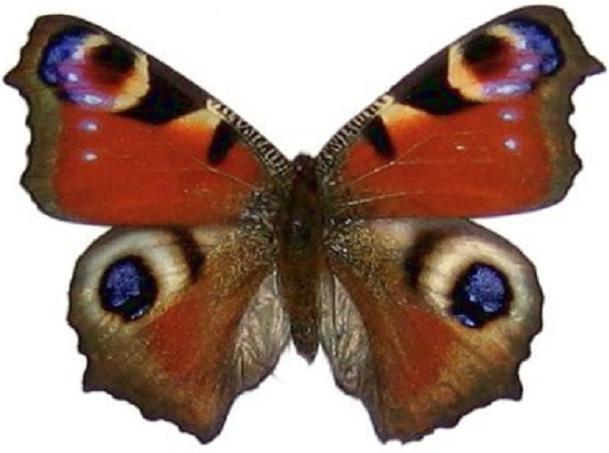
As everyone has known for a long time, the peacock's eye butterfly is very bright and beautiful. But at the same time, not everyone knows that the brightness of the color of its wings depends on the temperature surrounding it during pupation. The wings of fluttering beauties are brown-red in color with black and gray edging along the edges. The wing is simple in shape, with shallow cuts along the edge. The body is black, a reddish tint is noticeable from above.
What are the features of an insect
The daytime type appears only during daylight hours. In the spring, migration is observed, while the activity of the insect depends on meteorological conditions. In the absence of rain, the butterfly tribe can travel long distances to select the most favorable areas for laying eggs.
This factor depends on the initial habitat of the insect, some butterflies migrate in June, while others prefer to do it in September.
In winter, in a harsh continental climate, insects seek shelter. This can be haystacks, roofs, straw stacking. That is, the main requirements for wintering will be the presence of coolness and dampness.
It is at low temperatures that the inhibition of biological processes is observed, which allows the insect to fall into suspended animation. The most dangerous thing is the rise in temperatures in winter. This can lead to the death of the insect.


Butterflies do not tolerate cold
Habitat and habitat
The peacock butterfly is a typical inhabitant of Eurasia. From Spain to Japan, fluttering beauties delight nature lovers. Germany is a country where butterflies of this species live simply in huge numbers. It was here that the peacock's eye was voted the 2009 butterfly of the year.
The most favorable environment for these amazingly beautiful creatures is open country. The peacock's eye feels comfortable, fluttering in meadows, in the steppes, on the edges of forests. Parks and gardens can also be proud of such beautiful inhabitants. The polar tundra is too cold for such gentle creatures. The desert and dense dense forests are completely unsuitable for butterflies in need of space and life-giving moisture.
Fitness and relativity
What is the manifestation of the relative nature of any adaptation of organisms to their environment? = What is the manifestation of the relative nature of fitness?
Answer
When conditions change, fitness can become useless or harmful. For example, a white birch moth is clearly visible on a red wall.
The peacock butterfly has bright ocular spots only on the upper side of the wings. Name the type of color, explain the meaning of the color, as well as the relative nature of fitness.
Answer
Color type - mimicry. Color meaning: a predator can mistake the eye spots on the wings of a butterfly for the eyes of a large predator, get scared and hesitate, which will give the butterfly time to rescue. Fitness relativity: bright coloration makes the butterfly noticeable to predators, the predator may not be afraid of the ocellated pattern on the butterfly's wings.
The wasp fly is similar in color and body shape to a wasp. Name the type of her protective device, explain its meaning and the relative nature of the device.
Answer
The type of protective device is mimicry. Meaning: the resemblance to a wasp scares away predators. Relativity: resemblance to a wasp does not guarantee survival. there are young birds that have not yet developed a reflex, and specialized wasp-eating birds.
Name the type of protective device from enemies, explain its purpose and relative nature in the small seahorse fish - the rag-picker, living at a shallow depth among aquatic plants.
Answer
The type of protective device is disguise. The similarity of the ridge to algae makes it invisible to predators. Relativity: this similarity does not give them a complete guarantee of survival, since when the ridge moves and in open space, it becomes noticeable to predators.
Name the type of adaptation, the value of the protective coloration, as well as the relative nature of the fitness of the flounder, which lives in sea water near the bottom.
Answer
Color type - patronizing (merging with the background of the seabed). Meaning: the fish is invisible against the background of the ground, this allows it to hide from enemies and from possible prey. Relativity: Fitness does not help with the movement of the fish, and it becomes visible to enemies.
In the industrial regions of England, during the 19th-20th centuries, the number of birch moth butterflies with a dark color of the wings increased, compared with a light color. Explain this phenomenon from the standpoint of evolutionary teaching and determine the form of selection. = Explain the cause of industrial melanism in the moth moth butterflies from the standpoint of evolutionary doctrine and determine the form of selection.
Answer
First, one of the butterflies developed a mutation that allowed it to acquire a slightly darker coloration. Such butterflies are slightly less noticeable on smoked trunks, therefore, they were destroyed by birds a little less often than ordinary butterflies.They often survived and gave birth to offspring (natural selection took place), so the number of dark butterflies gradually increased. Then one of the slightly darker butterflies underwent a mutation that allowed it to become even darker. Due to camouflage, such butterflies more often survived and gave birth, the number of dark butterflies increased. Thus, due to the interaction of the driving factors of evolution (hereditary variability and natural selection), a dark masking color arose in butterflies. Selection form: driving.
The body shape of a kalimma butterfly resembles a leaf. How did the butterfly's body shape form? = The caterpillars of the turnip white butterfly are light green in color and are invisible against the background of cruciferous leaves. Explain, on the basis of evolutionary theory, the emergence of a protective coloration in this insect.
Answer
First, one of the caterpillars developed a mutation that allowed it to acquire a partially green coloration. Such caterpillars are slightly less noticeable on green leaves, therefore, they were destroyed by birds a little less often than ordinary caterpillars. They often survived and gave birth to offspring (natural selection took place), so the number of butterflies with green caterpillars gradually increased. Then one of the partially green caterpillars underwent a mutation that allowed it to become even greener. Due to camouflage, such caterpillars more often than other caterpillars survived, turned into butterflies and gave birth to offspring, the number of butterflies with even greener caterpillars increased. Thus, due to the interaction of the driving factors of evolution (hereditary variability and natural selection), a light green camouflage color arose in the caterpillars.
Bee flies, which do not have a stinging apparatus, are similar in appearance to bees. Explain, on the basis of evolutionary theory, the occurrence of mimicry in these insects.
Answer
First, one of the flies developed a mutation that allowed it to acquire a slight resemblance to a bee. Such flies were eaten by birds a little less often, more often they survived and gave birth to offspring (natural selection took place), therefore, gradually the number of flies resembling bees increased. Then one of these flies underwent a mutation that allowed it to become even more like a bee. Due to mimicry, such flies more often than other flies survived and gave birth to offspring, the number of flies with even greater similarity to bees increased. Thus, due to the interaction of the driving factors of evolution (hereditary variability and natural selection), mimicry arose in flies like bees.
On the body of a zebra that lives in the African savannas, dark and light stripes alternate. Name the type of its protective coloration, explain its meaning, as well as the relative nature of fitness.
Answer
The zebra has a dismembering coloration. Firstly, this color hides the real contours of the animal from the predator (it is not clear where one zebra ends and the other begins). Secondly, the stripes prevent the predator from accurately determining the direction of movement and speed of the zebra. Relativity: brightly colored zebras are clearly visible against the background of the savannah.
The moth caterpillar lives on the branches of trees and at the moment of danger it becomes like a twig. Name the type of her protective device, explain its meaning and relative nature.
Answer
Device type: disguise. Meaning: The knot-like caterpillar is less visible and less likely to be eaten by birds. Relativity: on a tree of a different color or a post, such a caterpillar will be clearly visible.
In the process of evolution, the white hare has developed the ability to change the color of the coat. Explain how this habitat adaptation was formed. What is its significance and how is the relative nature of fitness manifested?
Answer
Meaning: The hare has white coat in winter and gray in summer in order to be less visible to predators.Formation: mutations have accidentally occurred that give the hare such a coat color; these mutations were preserved by natural selection, since the hares, unnoticed by predators, more often survived. Relativity: if a hare in winter gets to the surface without snow (rock, fire), then it is very clearly visible.
Name the type of protective coloration from enemies in females of open nesting birds. Explain its meaning and relative nature.
Answer
Color type: disguise (blend into the background). Meaning: a bird sitting on a nest is invisible to a predator. Relativity: When the background changes or moves, the bird becomes visible.
| ZZUBROMINIMUM: preparing for the exam quickly | Part A assignments | Part B assignments | Part C assignments | Search by exam assignments |
Peacock butterfly: life cycle
The life cycle of a peacock's eye consists of four phases:
- egg;
- caterpillar;
- chrysalis;
- imago (butterfly).
During the warm season, one generation of butterflies is born, in areas with a hot climate, such as the Ciscaucasia and the Crimea, two generations have time to appear.
Approximately in the first half of June, butterflies leave pupae and flutter actively until the end of summer. For wintering, adults (sometimes pupae) settle in cool secluded places. Coolness is a prerequisite for wintering. If the butterfly chooses a place in a warm house, then it risks not waiting for the onset of spring and dying. The fact is that heat during hibernation speeds up the metabolism, as a result of which aging also accelerates.
What does the peacock have to do with it?
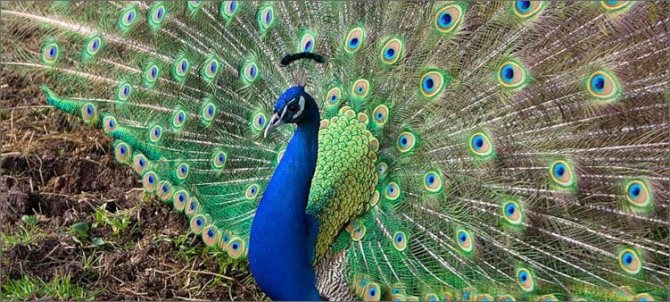

If you now say that you have never met this butterfly, then I assure you, you are mistaken! You have surely seen this bright orange miracle swinging on the yellow flowers of the mother and stepmother. It is this beauty in the forefront, among other insects, that brings on its wings the approaching summer by leaps and bounds.
Remember that you often met this one? Yes of course! It is everywhere: in parks, and in gardens, and in the forest and in the vegetable garden. It's just that not everyone knows that it is called that. And where is the lush-tailed peacock here? Everything ingenious is simple.
Has anyone looked at a peacock feather? Its tip is crowned with a beautiful iridescent blue-red-yellow-orange-green spot called an eye.
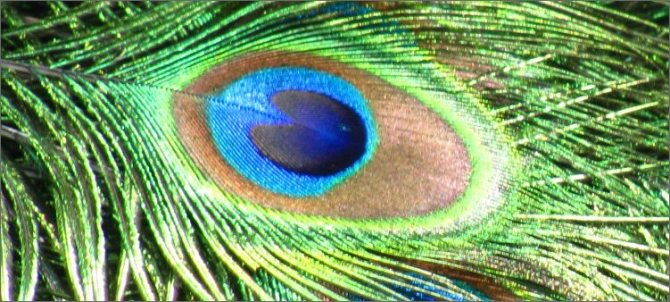

So, our butterfly's wings were also decorated with specks, similar in description and appearance to peacocks. That's why they called her that.
Moreover, flies are not only orange shades. Cherry-red clothes with eyes look especially impressive.
Do you know that?! The science that studies the life of butterflies is called lepidopterology.
Reproduction
After hibernation in early May, butterflies lay eggs using the backs of the leaves for laying. Favorite plants for this purpose are raspberries, nettles, hops. Eggs are discreet, small, light green, in one clutch there are from 100 to 300 eggs.
A week later, caterpillars hatch from the eggs. They are painted black with white dots. Within 14-21 days, they grow and develop on the same plant on which they were born.
The pupa-shaped peacock eye lasts for two weeks. They are attached to strong stems and acquire a color similar to the color of the plant itself. It can be brownish, greenish, or gray-gray.
Track appearance
The peacock-eye larva is a black caterpillar, similar to the larvae of urticaria. This is a very beautiful and interesting type of caterpillar. All over the body there are long, needle-like processes. In appearance, the body is covered with numerous pimples. In color, it does not give out its parents - multi-colored, bright moths with a predominance of red shades.
The peacock-eye caterpillar has a head, abdomen, chest. The oral apparatus and the digestive system are well developed, providing almost continuous nutrition. Due to this, the peacock's eye caterpillar grows quickly.
A miniature is born - about 1 mm.For the entire development cycle - from 4 to 6 weeks, sheds four times. Constantly increasing in size. Food does not appear through the strong black chitinous cover, which is characteristic of other larvae of butterflies and moths. From the inside of the body, legs are located, which allow the caterpillars of the peacock's eye to crawl along the bark of trees, leaves.
The caterpillar of the peacock's eye in the photo is shown below.
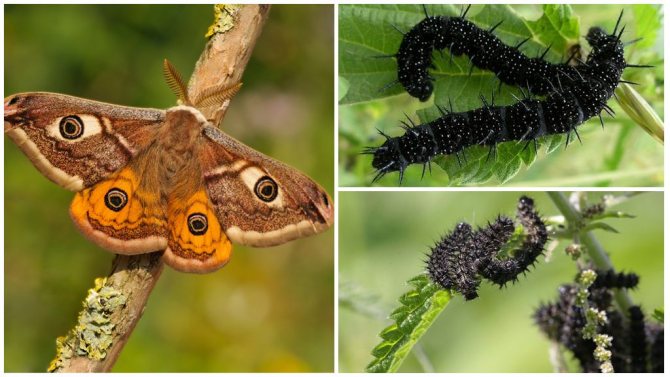

Peacock-eye caterpillars
Interesting facts about the life of butterflies
These are very amazing creatures, the more you learn about their life, the more you are amazed at these interesting facts:
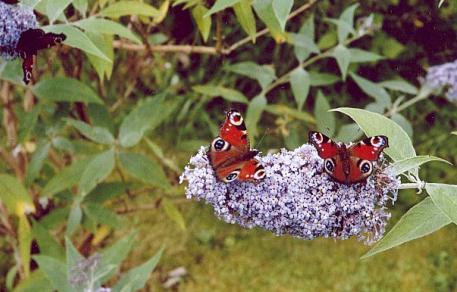

• Butterflies never sleep. • The presence of butterflies in ancient Egyptian frescoes proves the fact that they existed thousands of years ago. • It is impossible to imagine that such a delicate beauty can be killed, but nevertheless, in the countries of South America and Asia, butterflies are considered a delicacy. • The eyes of a butterfly are the most complex organ in their structure. They consist of six thousand tiny parts called lenses. • Night peacock eye - a butterfly that is not a relative of the ordinary peacock's eye, it is just a "namesake". This is the largest butterfly in Eurasia, its wingspan is about 15 cm, in flight it can be easily confused with a bird or a bat. • The most amazing thing is that butterflies need the warmth of the sun in order for them to fly.
Slightly more fluttering details
Well, we already understood that this is a butterfly. And what does she look like and what does she eat?
Let's start with the fact that our beauty is a representative of arthropod insects from the lepidoptera order. The family to which she belongs is called the nymphalids.
In nature, there is a day peacock eye and a night peacock eye, which, by the way, already belongs to the family of peacock eyes. These species differ, of course, in their way of life and in their size.
It is not difficult to see a lover of the day, she feeds on nectar, collecting it from flowers during the daytime, and her caterpillar eats leaves and young shoots of all kinds of plants with pleasure.
The coloration of a diurnal butterfly is often influenced by cold and warmth, which affected the caterpillar until it became a pupa. More often it is red-brown and red-brown, four blue eyes flaunt on the wings.
The size of an insect is determined by its wingspan. In daytime it is about 55 millimeters for "boys" and about 60 millimeters for "girls".
We suggest that you familiarize yourself with: Wasps: how to get rid of wasps in the country
It is not so easy to meet a night peacock's eye, as this butterfly is a lover of the dark. Its wingspan is 15 centimeters or more, so these insects are often confused with birds and bats.
How to feed such a giantess and where to get so much nectar? The most interesting thing is that the night watch does not need food. Everything that it has accumulated while growing in the state of a caterpillar serves as its food for a short life.
Food
The staple food of the adult peacock butterfly caterpillar is nettle. If there is no nettle, she can feed on ordinary hops, raspberries, willow leaves. For a butterfly, the most important and only food is plant nectar.
However, there are butterflies that are an exception to this. For example, the night peacock butterfly does not need food at all, they are inherent in the state of aphagia, in which living beings do not eat. The question - how can they exist and where they get energy for themselves arises from many curious people. In fact, everything is very simple.
Caterpillar butterfly peacock eats leaves
While still a caterpillar of a peacock's eye butterfly, it stubbornly saturates itself with all useful substances, hence the fame of it as a very voracious creature. Caterpillars are so addicted to their meal that they eat the plant completely. The choice of plant depends entirely on the sense of touch of the insect.
As for the nutrition of caterpillars, it should be noted that they are omnivorous, i.e. any plant food is used. But still in the first place are such plants: nettles, hops and raspberries; on the second - willow and hemp. A favorite dish of adult butterflies is nectar. They find it in thyme, burdock, thistle, scabiosa and flowers in the garden. In search of life-giving moisture, they sit on wet soil, feed on plant sap, which from time to time appears on the bark.
Creating favorable conditions for the existence of a butterfly
Where a person has not yet managed to intervene in the usual life of the biosystem, the peacock's eye butterfly most often lives. The main reason explaining this fact is the destruction of low-value plants by people - the usual food products of butterflies. Although they have been provided with reserves untouched by civilization for living, nevertheless, concern for their safety will not seem superfluous. It consists in not endangering the caterpillars, and also on the outskirts of fields, meadows to promote the free growth of nettles and burdocks. After all, these types of plants do not belong to malicious weeds.
Now you know what a peacock's eye looks like, what it eats and how long it lives.
Since ancient times, butterflies have been considered a symbol of spring, beauty and rebirth. These fluttering creatures are associated with immortality, love, loyalty and happiness. At weddings, there is a tradition to release pigeons or butterflies into the sky.
Beautiful, bright, they have become heroes of many legends and myths. One of the representatives of the genus is the peacock butterfly. She belongs to the species of the Nymphalida family and is a relative of the less bright checkers, urticaria and mother-of-pearl. The name "peacock's eye" appeared because of the characteristic spots on the wings, which, like two drops of water, look like "eyes" on the feathers in the peacock's tail.
Home content
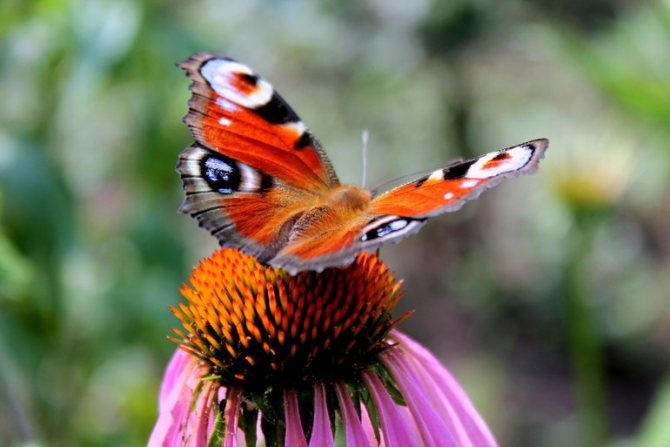

The prevalence of the peacock's eye is quite high, it is easy to find it in glades, meadows, forest edges, in parks, gardens and on the banks of rivers. It is useful for everyone to know about this butterfly, therefore, information about it in the form of a short story, message or report may even be asked to prepare a child at school.
But sometimes acquaintance with a butterfly occurs so closely that they decide to keep it at home. In order not to harm the insect by this, it will have to be looked after according to the following rules:
- Food. The butterfly needs to be fed 1-2 times a day. For food, you can use nettle, raspberry, hop, willow or burdock leaves, as well as chopped bananas, oranges, and other overripe fruits. A real treat for a butterfly will be natural honey diluted in water in a ratio of 1:10. Sugar can be used instead of honey.
- Breeding. Butterflies can also breed in captivity. For this, the male and female must be placed in a warm, spacious place with high humidity and good ventilation, where there is enough food and fresh leaves to lay eggs. Their mating can last from 30 minutes to 8 hours. If everything goes well, after a while caterpillars will appear, which will need to be fed with fresh grass. When pupating, they will have to be moved separately and hung upside down. You can put a wet towel next to it to increase the humidity in the air.
- Wintering. The life span of an insect can be increased only by sending it to hibernation for the winter. To do this, he needs to be fed, placed in a box with holes for ventilation and sent to a cool room where the temperature is in the range from 0 to 5 degrees Celsius. If the butterfly hibernates in the warmth, its life processes will slow down insufficiently, and it can grow old and die during hibernation.
Defense mechanism
The features of the life of butterflies are quite capable of surprising. Particularly interesting are their ways of defending against natural enemies:
- The folded wings of the representatives of the species can be easily confused with a withered nettle leaf, but if a larger insect or bird guesses the disguise and starts approaching a potential victim, it will suddenly open and show its “eyes”. This scares enemies, and the butterfly has time to fly away.
- The butterfly is able to defend itself not only from birds and insects, but also from nocturnal predators, which in the dark are unlikely to fully feel the effect of the sudden appearance of eyes. When rodents or bats approach, the insect starts hissing like a cat or a snake. This sound is produced by rubbing the wings and is strong enough to scare the animal away.

